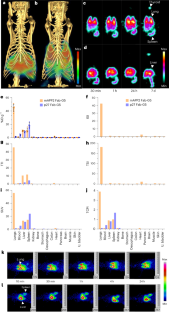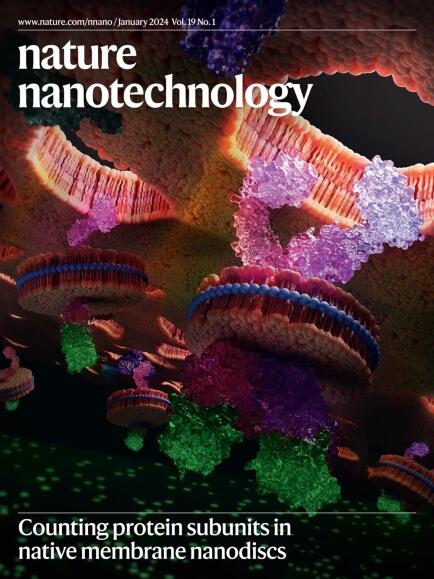Rapid precision targeting of nanoparticles to lung via caveolae pumping system in endothelium
IF 38.1
1区 材料科学
Q1 MATERIALS SCIENCE, MULTIDISCIPLINARY
引用次数: 0
Abstract
Modern medicine seeks precision targeting, imaging and therapy to maximize efficacy and avoid toxicities. Nanoparticles (NPs) have tremendous yet unmet clinical potential to carry and deliver imaging and therapeutic agents systemically with tissue precision. But their size contributes to rapid scavenging by the reticuloendothelial system and poor penetration of key endothelial cell (EC) barriers, limiting target tissue uptake, safety and efficacy. Here we discover the ability of the EC caveolae pumping system to outpace scavenging and deliver NPs rapidly and specifically into the lungs. Gold and dendritic NPs are conjugated to antibodies targeting caveolae of the lung microvascular endothelium. SPECT-CT imaging and biodistribution analyses reveal that rat lungs extract most of the intravenous dose within minutes to achieve precision lung imaging and targeting with high lung concentrations exceeding peak blood levels. These results reveal how much ECs can both limit and promote tissue penetration of NPs and the power and size-dependent limitations of the caveolae pumping system. This study provides a new retargeting paradigm for NPs to avoid reticuloendothelial system uptake and achieve rapid precision nanodelivery for future diagnostic and therapeutic applications. Reducing scavenging of nanoparticles by the reticuloendothelial system and increasing their penetration through endothelial cell barriers would increase their clinical potential. Here the authors show that small nanoparticles targeting the caveolae of the lung microvascular endothelium are rapidly delivered to the lungs for precision imaging and targeting.


通过内皮细胞中的空穴泵系统将纳米粒子快速精确地靶向到肺部
现代医学追求精准靶向、成像和治疗,以最大限度地提高疗效和避免毒性。纳米粒子(NPs)具有巨大的临床潜力,但尚未得到满足,可在全身组织中精确携带和递送成像和治疗药物。但是,纳米颗粒的尺寸会导致其被网状内皮系统快速清除,并且难以穿透关键的内皮细胞(EC)屏障,从而限制了靶组织的吸收、安全性和疗效。在这里,我们发现了内皮细胞洞穴泵系统的能力,它能超越清除作用,将 NPs 快速、特异性地输送到肺部。金和树枝状 NPs 与针对肺部微血管内皮细胞洞穴的抗体结合。SPECT-CT 成像和生物分布分析表明,大鼠肺部在数分钟内提取了大部分静脉注射剂量,实现了精确的肺部成像和靶向,肺部的高浓度超过了血药浓度峰值。这些结果揭示了EC既能限制又能促进NPs组织渗透的程度,以及洞穴泵系统的功率和大小限制。这项研究为 NPs 提供了一种新的再靶向范例,以避免网状内皮系统摄取,实现快速精确的纳米给药,用于未来的诊断和治疗应用。
本文章由计算机程序翻译,如有差异,请以英文原文为准。
求助全文
约1分钟内获得全文
求助全文
来源期刊

Nature nanotechnology
工程技术-材料科学:综合
CiteScore
59.70
自引率
0.80%
发文量
196
审稿时长
4-8 weeks
期刊介绍:
Nature Nanotechnology is a prestigious journal that publishes high-quality papers in various areas of nanoscience and nanotechnology. The journal focuses on the design, characterization, and production of structures, devices, and systems that manipulate and control materials at atomic, molecular, and macromolecular scales. It encompasses both bottom-up and top-down approaches, as well as their combinations.
Furthermore, Nature Nanotechnology fosters the exchange of ideas among researchers from diverse disciplines such as chemistry, physics, material science, biomedical research, engineering, and more. It promotes collaboration at the forefront of this multidisciplinary field. The journal covers a wide range of topics, from fundamental research in physics, chemistry, and biology, including computational work and simulations, to the development of innovative devices and technologies for various industrial sectors such as information technology, medicine, manufacturing, high-performance materials, energy, and environmental technologies. It includes coverage of organic, inorganic, and hybrid materials.
 求助内容:
求助内容: 应助结果提醒方式:
应助结果提醒方式:


